|
INSIGNIAS
Here
are a few Air Cav insignias out
of Alex and my collection.
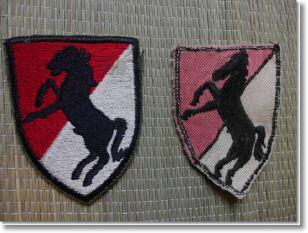
Green cut edge 11th
ACR AND in Country
made patch
|
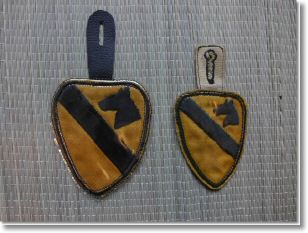
Two in country made
pocket patches
|
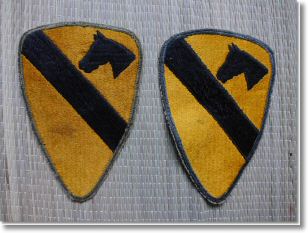
Two early brown
cut edge patches
|
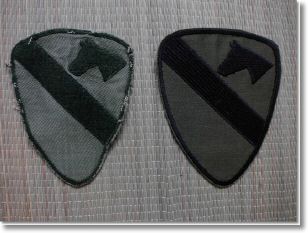
Twill
|
_tm.jpg)
Early brown cut edge
patche
|
_tm.jpg)
Later green cut edge
patch |
_tm.jpg)
Subdued twill
|
_tm.jpg)
In country made
|
The
full colour cut edge, the twill
subdued and later in the war the
merrow edge US made shoulder
patches were used in the war as
well as many locally produced tailor
made patches.
It is very important that you do
wear the correct type of patch
on your uniform for the type of
uniform and the year your
portray your
impression.
What
often people refer as in
"Country made" or
Vietnam made insignia were not
only made in Vietnam, but all
over South East Asia where
ever US troops where, there
construction can some time be
identified as where they were
made.
They also came in many different
qualities as you could go to you
local "Mama San with a
sewing machine"
or to taylor shop like"
Cheap Charlie in Saigon and get
any patch made.
To further complicated things,
from the early 70's (during the
war), Vietnamese tailors started
producing patches for the US
Military Patches Collectors,
which were purchased by Merchant
Navy personnel for resale in the
US or for their own collection.
From the late 80's and early
90's once genuine war time made
patches started to dry up, the
same Vietnamese Tailors that
used to produce patches during
the war started again producing
patches for the growing
collector marquet with the same
machines that they had used
during the war.
To even had further to the
difficulty in identifying
a genuine patch from a copy, the
genuine patches have many
different constructions as to
when, where and by who they were
made. Patches collectors can
acquire a feel for spotting
fakes or genuine one ones but
there is not an infallible rule
and many post Vietnam war
patches made in South East Asia
have inadvertently entered
individual Genuine collections
as well as genuine War time
patches being now questioned as
been authentic!
Pin
on rank insignia was authorised
in the summer of 1967 and a
mixture of pin on and subdued
sleeve rank insignia will be
seen until the end of the war.
The merrow edge type
patches started to appeared in
small quantity from around 1969 onwards and are not a good
representation of the patches
used during the Vietnam
war.
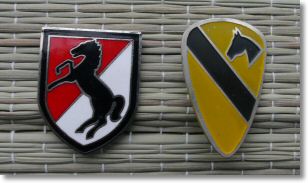
11th ACR DI is post
Vietnam, Genuine Air Cav
"beer can"
|
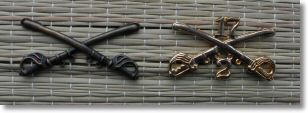 |
A
lot of combat troops in the
field tended not to wear
insignia on their
uniforms.
However if you do want to wear
some, they must be the proper
U.S. Army issue twill or ‘local’
Vietnamese-made patches.
|